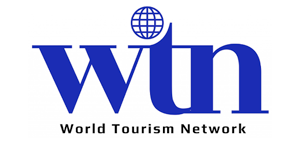With China set to celebrate the Lunar New Year without travel restrictions for the first time in four years, some in its tourism sector are hopeful that demand will rebound, while others remain cautious.
Take the Ancient City of Pingyao, a well-preserved walled city in northern China’s Shanxi Province.
A commercial center and a financial hub during the Ming and Qing dynasties, Pingyao today is a Unesco World Heritage site of 2.25 sq. kilometers. Hundreds of restaurants, gift shops and inns once lined its streets, welcoming visitors. But “70% to 80% of them shut down over the last three years,” a 37-year-old inn owner said.
While some main-street restaurants are busy, shops on smaller streets remain closed, with “for rent” signs out front.
Repeated bans on visitors to the city, starting in the Lunar New Year season of 2020, sent tourism demand plummeting. Tourists to Pingyao tumbled from more than 7 million in the January-June period of 2019 to below 400,000 in the same half of 2022. As a result, the ancient city’s capacity to accommodate tourists declined.
This is why “it’ll take another year at a minimum” for visitors to Pingyao to recover to pre-coronavirus levels, the inn owner reckons.
With the country all but abolishing Covid-19 restrictions, travel during the 40-day period around the Lunar New Year will nearly double to 2.095 billion passenger trips this season, transportation authorities forecast. Most travelers are going to see their families. But about 10% of the passenger flows will be tourism.
One question is whether tourism destinations have sufficient capacity. China lost 40% or so of its hotels and inns over the two-year period to January 2022, bringing down the total to slightly more than 360,000, according to the China Hospitality Association. Smaller inns were hit particularly hard, with a loss of roughly 60%.
The tropical province of Hainan just saw an influx of about 1 million visitors during the New Year’s period. This was down more than 10% from 2019, but some upscale hotels were offering rooms at 200,000 yuan or more (US$29,525) a night, illustrating how the supply of available rooms is overwhelmed by a surge in demand.
For hotels and restaurants shut down over the zero-Covid policy to reopen, a sustainable rebound in demand is a must. Some are hopeful that consumers are ready to release pent-up demand by spending big. But worrisome signs are emerging.
In a People’s Bank of China survey for October to December, only 13.3% of 20,000 depositors said they would increase spending on travel in the next three months – the lowest share since 2016. Those answering health care reached a record 29.6%.
Health care is becoming a major spending item as coronavirus infections soar in major cities after the easing of the zero-Covid policy. Measures to improve employment and income will be critical to encourage consumers to loosen their purse strings and spend more on travel.
- TAGS / KEYWORDS:
- trending#1


















.png)














